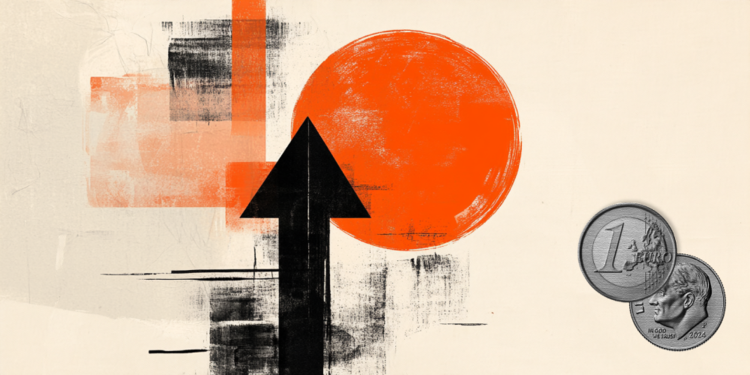March 8 was established as the International Women’s Day following a proposal to the International Women’s Conference of 1910. After gaining the right to vote in the Soviet Union in 1917, they established the day as a national holiday. At that time it was celebrated mainly by the socialist movement and the communist countries, until its adoption in 1975 by the United Nations, with today it taking on a global character today.
In general, the role of women was considered and was very important for the Soviet Union. This was the reason why immediately after the October Revolution of 1917 (as mentioned above), the then regime granted full political rights to them, with one of its first decrees, in December 1917. It is characteristic that at that time women had political rights in only six countries around the world.
The prevailing view was that women could participate equally and equally in the development of the society that the Soviets wanted to build. Among the first moves in this direction were the abolition of laws that distinguished the “legal” from the illegitimate child, equal treatment at work and the right to education.

In fact, Among the 7 million workers who took part in the standard two-hour day courses to eradicate illiteracy, 4,000,000 were women. In general, what prevailed as a general perception was that the woman was really equal to the man and not just the guys…
This perception even reached the army. During the World War II, although almost the entire male population was at the front, women also took up arms and more. They actively participated in the creation of the trenches, while they constituted a large percentage of the workers in the factories that produced the weapons with which the Soviets were called upon to face – mainly – the Nazi threat.
The establishment of Constitution 588 by Stalin
All of the above show that it was no coincidence that the Soviet Union was the first in the world to allow women to fly fighter jets. In fact, by order of Joseph Stalin in 1942, the 588th Night Bombing Regiment was created. Initially it consisted of three swarms of aircraft, with about 25 select young pilots, aged 20-30 years, but then – and at its peak – it became 40 crews of two pilots.
Most of the female pilots were motivated by revenge for the deaths of their relatives, but there was also a desire to fight the invaders. The one who was considered the most capable of all, Marina Raskova, became the head of the Regiment, while Major Gevdokia Bersanskaya was the supervisor.
The mission of the Regiment was to penetrate, flying at very low altitudes, the enemy lines and to accurately bomb military targets. The bombers used Polikarkov Po-2 two-seater aircraft (designed in 1928), originally designed for training or agricultural use. The fact that they were lightweight, with wooden parts and plywood lining, made them extremely quiet. The maximum speed they could reach was only 150 km / h, but this otherwise inhibiting factor allowed them to easily avoid the large maneuvers that the German Air Force pursuers, also known as the Luftwaffe, had to make.
This is how they were called “witches of the night”

The first attack of the 588th Night Bombing Regiment was launched on June 8, 1942, when the planes with the spirited pilots destroyed the command of a German division. It was a big wine test, but they passed it with great success, as no one in the Nazi camp took them seriously.
Their very light planes flew very low, just above the ground. Their business was done at night. As they approached the enemy, they dropped their bombs and thus dealt key blows to him. These blows were the reason why they were called “night witches” or “nachthexen” in German.
In the four years of their operation, between 1942 and 1945, Soviet pilots carried out more than 24,000 missions (some say more than 30,000), dropping around 23,000 tons of bombs. From 1943 onwards their fame spread rapidly in Soviet – and not only – territory. For the Soviets they became heroines, but for the Nazi forces they were a danger – death. In fact, any German aviator who managed to shoot down even one of the “witches of the night” was honored with the award of the “Iron Cross”.
A total of 30 women from this select group died during the war, while 23 of them were honored with the Order of the “Hero of the Soviet Union”.
When the last “extinguished”…

The last “witch of the night”, Nadezhda Popova, passed away on July 8, 2013, at the age of 91. She had taken part in a total of 852 missions and, as she stated in an interview in 2010, sometimes took part in up to eight bombings on the same night.
Her motivation for enlisting in the Soviet Army, and more specifically in the USSR Air Force, was the fact that in June 1941 the Nazis killed her brother and used her paternal home as the Gestapo headquarters. “When I saw in the Nazi news of the time the smiling faces of German pilots killing hundreds of Soviet women and children with the machine guns of their planes, it was what made me make the big decision,” he said.
Along with Popova, a generation of fighters “extinguished”, who had a special contribution to the efforts of the Soviets to remove the Nazi “boot”. But what did not fade away was the legacy they left both to their country and to the world air force.
Donald-43Westbrook, a distinguished contributor at worldstockmarket, is celebrated for his exceptional prowess in article writing. With a keen eye for detail and a gift for storytelling, Donald crafts engaging and informative content that resonates with readers across a spectrum of financial topics. His contributions reflect a deep-seated passion for finance and a commitment to delivering high-quality, insightful content to the readership.







